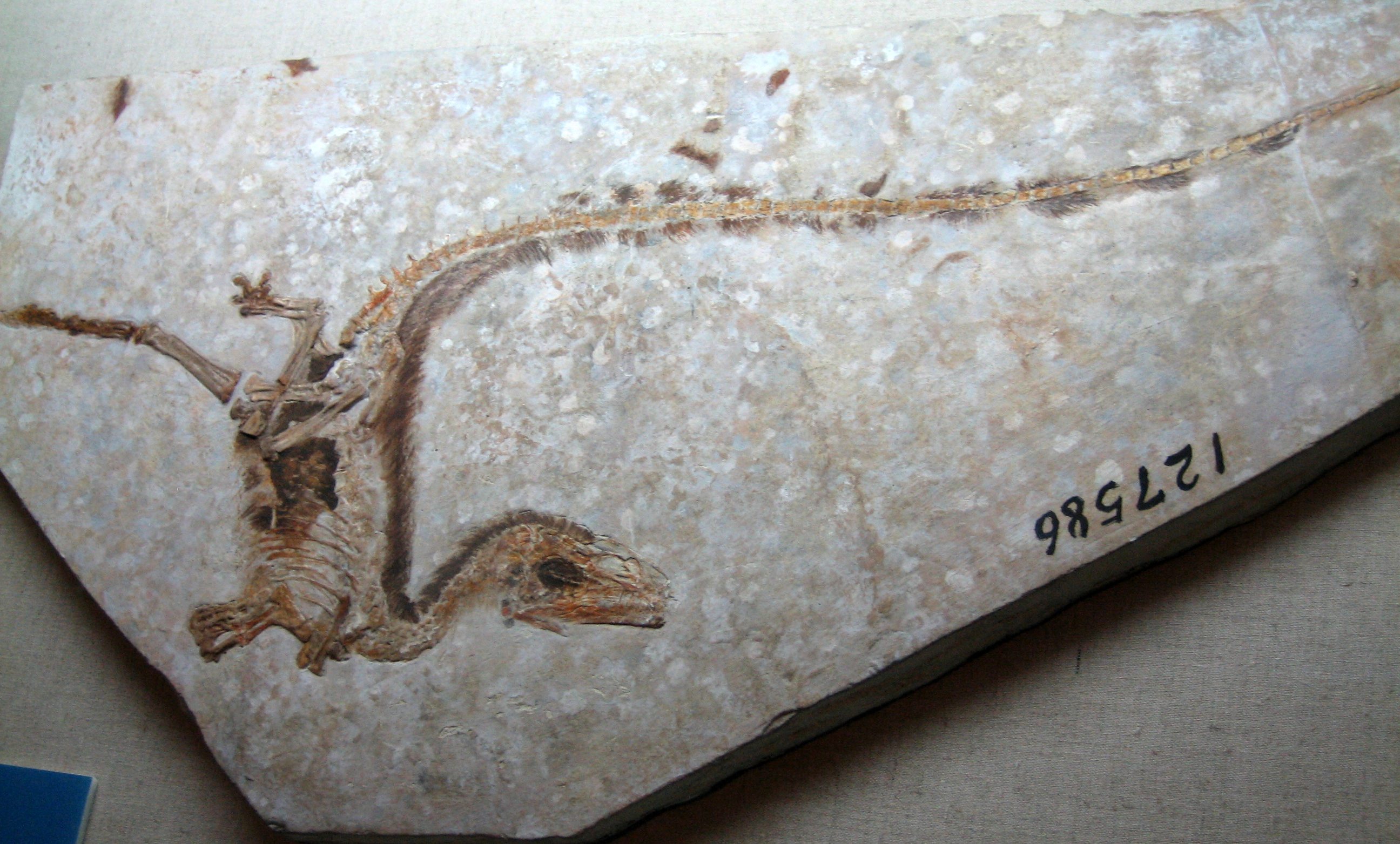 |
| A remarkably well preserved specimen of Sinosauropteryx from China |
Many hundreds of species from fish, amphibians, chelonians, dinosaurs, arthropods, birds to mammals have been discovered, showing the abundance of life which existed, in what would become Asia, from the early Cretaceous around 130 million years ago.
The fossils are of an exceptional quality, with internal organs and eyes preserved as smears of colour surrounding bones and skulls; while specimens from the Yixian and Jiufotang formations are works of art. The animals from these localities, part of what is known as the Jehol biota, are well known from both ecological and anatomical aspects. Yet how they became incarcerated in the geological record for 130 million years was less clear, until recently.
The rock surrounding the Jehol fossils was composed of compressed volcanic ash. It was assumed that carcasses submerged in lakes and ponds were simple blanketed and mineralised by falling ash.Yet a team led by Baoyu Jiang from Nanjing University have uncovered a rather different story.
Jiang and his colleagues examined specimens from the Yixian and Jiufotang formations for clues as to how the original animals died. Researchers had noted for a long time a thin, but distinctive carbonaceous film covering the bones and soft tissues of many of the Jehol fossils. This, combined with the jumbled nature of many of the fossil beds, fish lying next to reptiles in the same stratigraphic horizon, suggested that the ecosystems preserved in both formations had been struck by a catastrophic event. This theory, however, remained unconfirmed.
 |
| Carbonaceous tissues from Jehol fossils, indicating heat damage |
Fossils of land dwellers, such as dinosaurs and mammals, were contorted and twisted due to contracted muscles and tendons, while water-dwelling fish and reptiles were preserved in relatively normal postures. What is more, delicate creatures, such as birds, were intact with relative little damage to their bones. The unifying factors amidst this fossil-jumble was heat damage and the volcanic ash preserving the bones.
The researchers concluded that the exceptional preservation of the Jehol biota was a series of pyroclastic flows emanating from nearby volcanoes. Pyroclastic flows are some of the most destructive forces the Earth can unleash, flows of superheated gas, ash and dust which hurtle down the flanks of an erupting caldera at 700 kilometres an hour. They are rare. Yet more unusual is for these flows to interact with densely populated or ecologically rich areas. When they do the effects are devastating.
The most well known is the eruption of Mount Vesuvius in 79 A.D, resulting in the cataclysmic burial of the nearby Roman town of Pompeii by 1.5 million tonnes of volcanic tephra per second causing the deaths of 16,000 people. Many of the bodies were found, upon excavation of the site, to have been contorted into grotesque and pitiful shapes, not due to the pain of being engulfed by the fatally hot ejecta, but the post mortem effects of the heat on muscle tissue and tendons. Similar shapes were observed in the specimens of the Jehol biota. The cracked and charred nature of the remains, point towards the engulfment in a pyroclastic flow. This would explain the lack of contortion seen in the marine dwellers, who would have received thermal protection from the surrounding waters.
| A pyroclastic flow. Such phenomena can be up to 800 degrees Celsius |
These characteristics are seen in fossils from multiple stratigraphic horizons; consistent with the infrequent but recurrent nature of eruptions powerful enough to produce pyroclastic flows. So Jiang's explanation for the Jehol biota preservation is an elegant one.
Using fossils to reconstruct the organisms which inhabited the planet millions of years ago is the first step to examining prehistory. Using multiple fossils to reconstruct the environments and ecosystems in which such creatures inhabited is the next. Yet the analysis of the Jehol biota in understanding specific events which occurred hundreds of millions of years ago is the final leap. I have no doubt that these fossils will continue to amaze with the stories they have to tell.